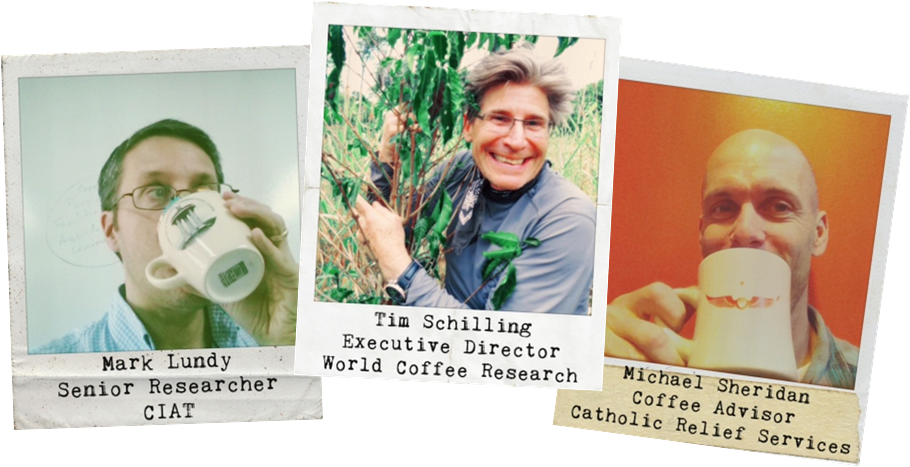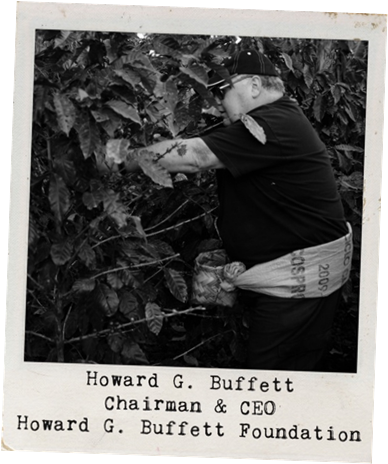When we published our 2014 New Year’s resolutions back in January, at the top of the list was this: “enlist industry leaders and research institutes in a comparative cupping of two leading Colombian coffee varieties, Castillo and Caturra.”
That public commitment set off nine months of frenetic activity during which we collaborated with the International Center for Tropical Agriculture (CIAT) on research design, developed a partnership with World Coffee Research, recruited some of the best sensory people in coffee and spent lots of time with growers in Nariño collecting coffee.
Today, all that hard work pays off: the Colombia Sensory Trial gets underway at the Intelligentsia Roasting Works in Chicago. Below, a quick-and-dirty guide to the who, what, when, where, why and how of the whole affair.
WHO?
The jury.
The judge.
The writers.
(Not pictured: Dr. Edgar Chambers, KSU.)
The underwriter.
WHAT?
The Colombia Sensory Trial is a multi-faceted comparison of two leading coffee varieties in Nariño, Castillo and Caturra.
The mixed-methods approach to sensory analysis involves two separate processes. In one process, leading coffee tasters from the U.S. specialty coffee industry and the Colombian National Coffee Growers Federation will blindly cup samples of the two varieties during separate panel events, the first in October 2014 and the second in January 2015. Both panels will be held at the Intelligentsia Coffee laboratory in Chicago.
In a parallel process, researchers from the sensory lab at Kansas State University (KSU), under the coordination of WCR, will also perform a descriptive analysis of the same samples.
Upon conclusion of the three sensory analyses, CIAT will lead a research team that also includes representatives from CRS, KSU and WCR to analyze and contextualize the results. Research publications will include comparative methods analysis and decision-support analysis that puts the quantitative results in the appropriate social, economic and cultural context. The project is designed to inform decision-making at multiple levels:
WHEN?
The sensory jurors will convene twice to cup samples of Castillo and Caturra under the direction of the judge, this week and again in January.
CRS will work with researchers from CIAT, WCR, Kansas State University and other institutions to prepare preliminary results in time to present during the 2015 SCAA Symposium/Expo in April 2015.
WHERE?
Both panels will be hosted by Intelligentsia Coffee at its Roasting Works in Chicago.
HOW?
I have described the approach of the Colombia Sensory Trial in general terms here. And here. And here. And here. Despite questions from readers about the “how” of the thing, I have never published a full account of the methodology. Until today. This document describes in detail the process behind the Colombia Sensory Trial, from how we selected the farms that were chosen to participate to how we plan to contextualize the results, with lots of detail in between.
WHY?
The most important question for all research is this: so, what? What purpose does it serve?
The Colombia Sensory Trial is designed to inform decision-making at multiple levels:
- On the farm, where growers are seeking greater clarity about the returns they can expect on their investments in different coffee varieties;
- In the industry, where buyers are making purchasing decisions in a marketplace with rising standards for quality and a coffee landscape that is changing rapidly; and
- In the policy process, where governments, coffee institutes and public and privately funded projects determine which coffee varieties to promote, support and subsidize through the provision of certified seed, extension support, credit and grants and other services.
– – – – –
The Colombia Sensory Trial is supported by a grant from the Howard G. Buffett Foundation.






